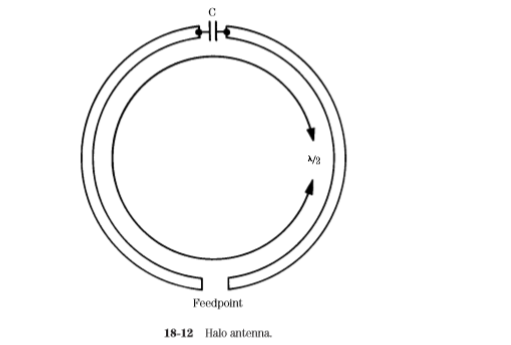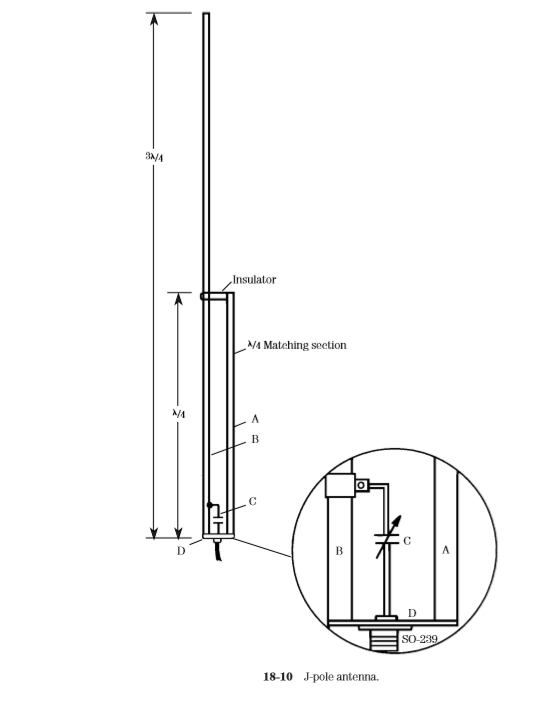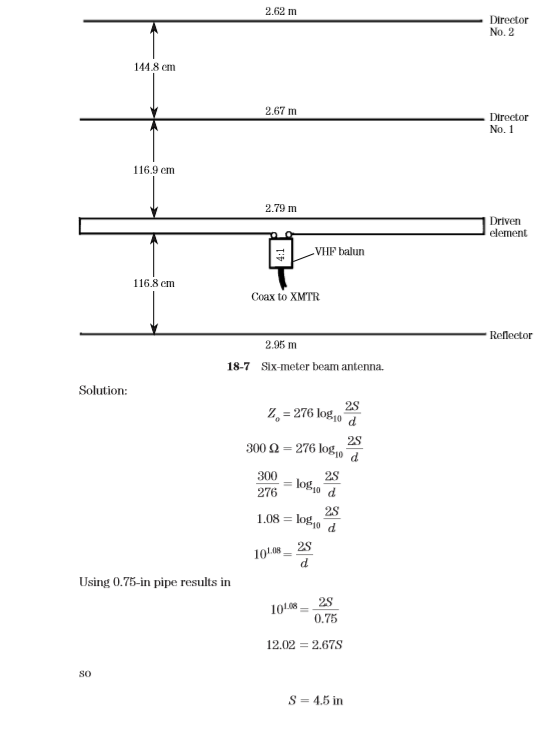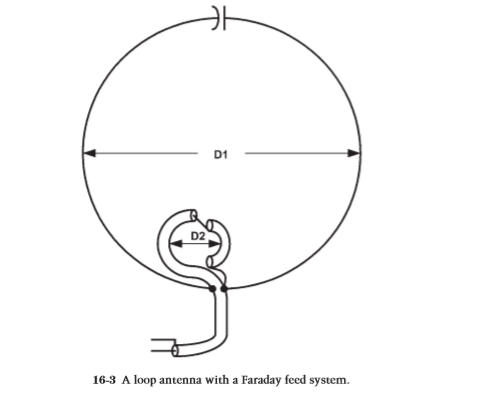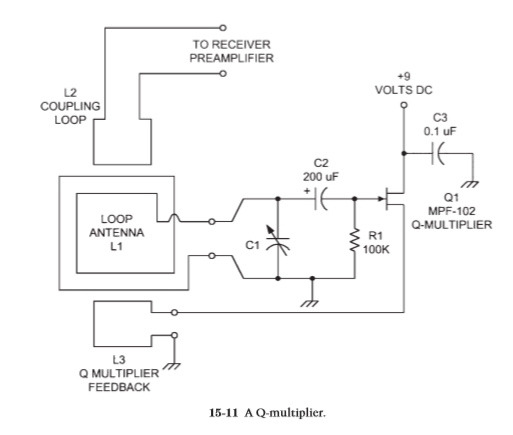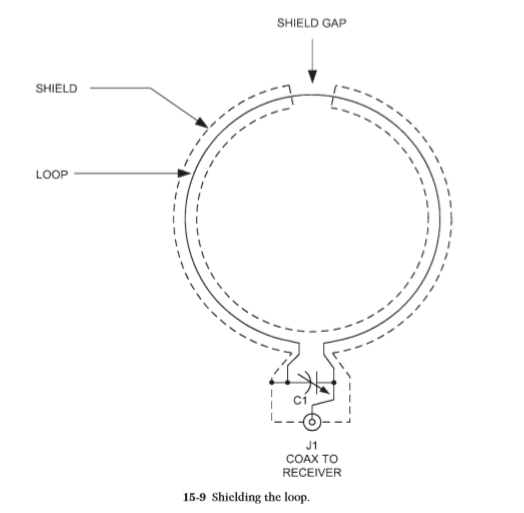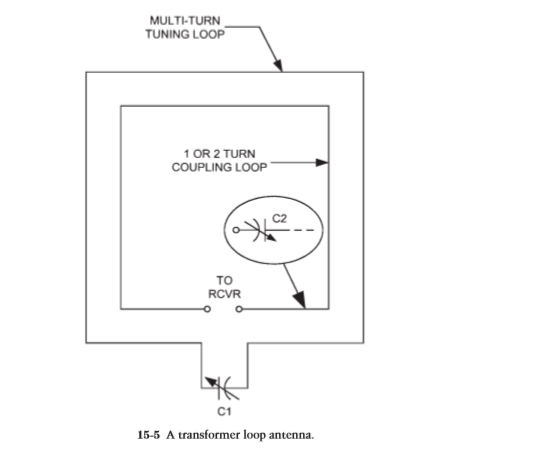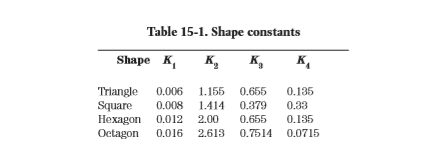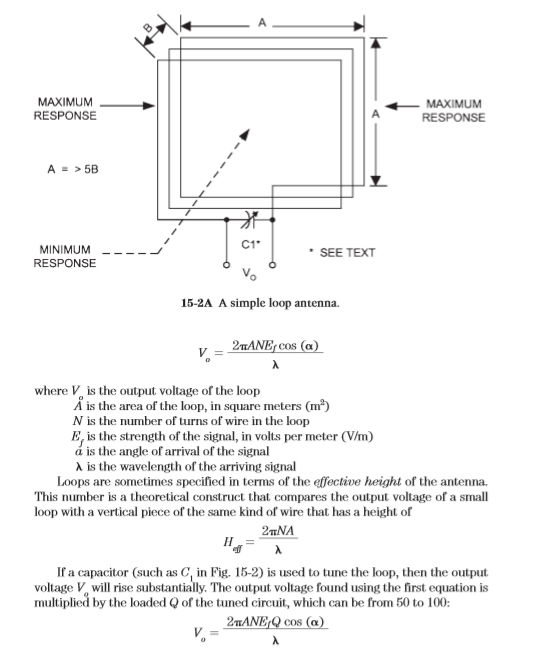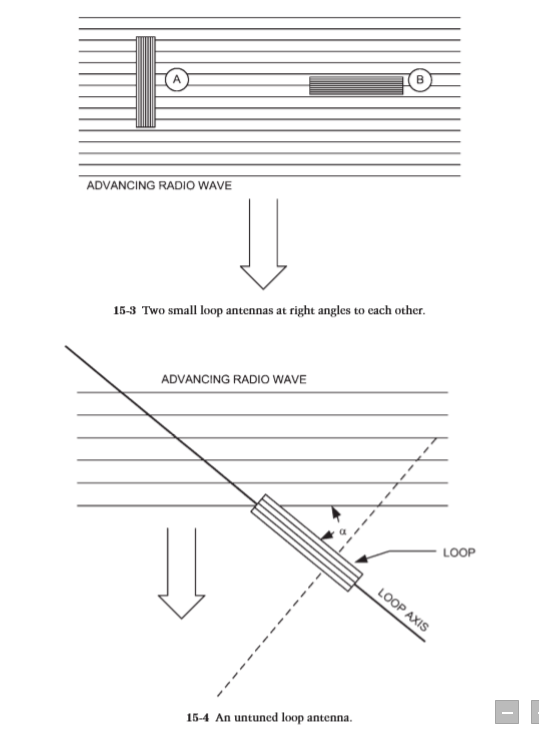Radio direction finders and people who listen to the AM broadcasting bands, VLF, medium-wave, or the so-called low-frequency tropical bands are all candidates for a small loop antenna.
These antennas are fundamentally different from large loops and other sorts of antennas used in these bands. Large loop antennas have a length of at least 0.5 , and most are quite a bit larger than 0.5 . Small loop antennas, on the other hand, have an overall length that is less than 0.22 , with most being less than 0.10 .
The small loop antenna responds to the magnetic field component of the electromagnetic wave instead of the electrical field component. One principal difference between the large loop and the small loop is found when examining the RF currents induced in a loop when a signal intercepts it.
In a large loop, the current will vary from one point in the conductor to another, with voltage varying out of phase with the current. In the small loop antenna, the current is the same throughout the entire loop.
The differences between small loops and large loops show up in some interesting ways, but perhaps the most striking is the directions of maximum response—the main lobes—and the directions of the nulls.
Both types of loops produce figure-8 patterns but in directions at right angles with respect to each other. The large loop antenna produces main lobes orthogonal,at right angles or “broadside,” to the plane of the loop. Nulls are off the sides of the loop.
The small loop, however, is exactly the opposite: The main lobes are off the sides of the loop (in the direction of the loop plane), and the nulls are broadside to the loop plane (Fig. 15-1A). Do not confuse small loop behavior with the behavior of the loopstick antenna.
Loopstick antennas are made of coils of wire wound on a ferrite or powdered-iron rod. The direction of maximum response for the loopstick antenna is broadside to the rod, with deep nulls off the ends (Fig. 15-1B). Both loopsticks and small wire loops are used for radio direction-finding and for shortwave, low-frequency medium-wave, AM broadcast band, and VLF listening.
The nulls of a loop antenna are very sharp and very deep. Small changes of pointing direction can make a profound difference in the response of the antenna. If you point a loop antenna so that its null is aimed at a strong station, the signal strength of the station appears to drop dramatically at the center of the notch.
Turn the antenna only a few degrees one way or the other, however, and the signal strength increases sharply. The depth of the null can reach 10 to 15 dB on sloppy loops and 30 to 40 dB on well-built loops (30 dB is a very common value). I have seen claims of 60-dB nulls for some commercially available loop antennas.
The construction and uniformity of the loop are primary factors in the sharpness and depth of the null.
At one time, the principal use of the small loop antenna was radio direction-finding, especially in the lower-frequency bands. The RDF loop is mounted with a compass rose to allow the operator to find the direction of minimum response. The null was used, rather than the peak response point, because it is far narrower than the peak.
As a result, precise determination of direction is possible. Because the null is bidirectional, ambiguity exists as to which of the two directions is the correct direction. What the direction-finder “finds” is a line along which the station exists. If the line is found from two reasonably separated locations and the lines of direction are plotted on a map, then the two lines will cross in the area of the station. Three or more lines of direction (a process called triangulation) yields a pretty precise knowledge of the station’s actual location.
Today, these small loops are still used for radio direction-finding, but their use has been extended into the general receiving arena, especially on the low frequencies. One of the characteristics of these bands is the possibility of strong local interference smothering weaker ground-wave and sky-wave stations.
As a result, you cannot hear cochannel signals when one of them is very strong and the other is weak. Similarly, if a cochannel station has a signal strength that is an appreciable fraction of the desired signal and is slightly different in frequency, then the two signals will heterodyne together and form a whistling sound in the receiver output.
The frequency of the whistle is an audio tone equal to the difference in frequency between the two signals. This is often the case when trying to hear foreign BCB signals on frequencies (called split frequencies) between the standard spacing. The directional characteristics of the loop can help if the loop null is placed in the direction of the undesired signal.
Loops are used mainly in the low-frequency bands even though such loops are either physically larger than high-frequency loops or require more turns of wire. Loops have been used as high as VHF and are commonly used in the 10-m ham band for such activities as hidden transmitter hunts.
The reason why low frequencies are the general preserve of loops is that these frequencies are more likely to have substantial ground-wave signals. Sky-wave signals lose some of their apparent directivity because of multiple reflections.
Similarly, VHF and UHF waves are likely to reflect from buildings and hillsides and so will arrive at angles other than the direction of the transmitter. As a result, the loop is less useful for the purpose of radio directionfinding.
If your goal is not RDF but listening to the station, this is hardly a problem. A small loop can be used in the upper shortwave bands to null a strong local groundwave station in order to hear a weaker sky-wave station.
Finally, loops can be useful in rejecting noise from local sources, such as a “leaky” electric power line or a neighbor’s outdoor light dimmer. Let’s examine the basic theory of small loop antennas and then take a look at some practical construction methods.
Grover’s equation
Grover’s equation (Grover, 1946) seems closer to the actual inductance measured in empirical tests than certain other equations that are in use. This equation is
n is the number of turns in the loop
K1through K4 are shape constants and are given in Table 15-1
ln is the natural log of this portion of the equation
